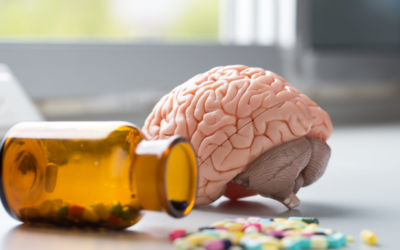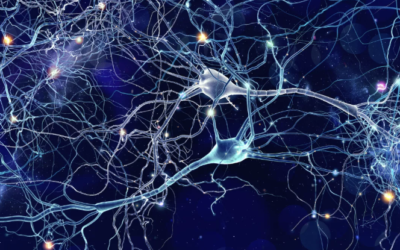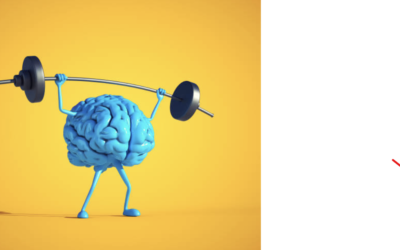A Typical User’s Experience With Neurofeedback
When you’re just starting to learn about neurofeedback therapy, it’s understandable to be nervous at the thought of trying it yourself. There are a lot of scientific terms surrounding it that you’ve probably never heard of or never heard explained properly before. You may also wonder what it feels like and if it will be difficult.
To all of that, we say: it’s okay to be nervous, but there’s also nothing to be anxious about. If you want to know just how simple, safe, and non-invasive this type of therapy is, keep reading as we describe a typical user’s experience with neurofeedback.
The Beginning: QEEG Brain Mapping
When you begin neurofeedback therapy with Sober Brains, you’ll typically sign up for our holistic package. The package starts with QEEG brain mapping.
QEEG stands for “quantitative electroencephalogram.” It’s a test that involves placing electrodes on your scalp that are connected to a computer at the other end. The electrodes measure the electrical activity in your brain and “map” it out in the form of brain waves. These waves appear on the computer screen, where we can analyze them for abnormalities.
Now before you start panicking, by “abnormalities,” we don’t mean that your brain is bad in some way, each brain is unique and has learned it’s patterns through the test of time. That’s not the purpose of the QEEG or neurofeedback.
Often, abnormal brain waves are indicative that some of your neural pathways are out of balance. Neural pathways are the paths that electric signals take to transfer messages to and from different parts of your brain. This is a function of your nervous system, and it’s how every thought, movement, and action starts.
Any one of us can become out of balance just going about our day to day lives. The good news is if your brain can learn to become dysregulated, there is a great chance it can learn to become regulated again.
When you are unbalanced or are recovering from an addiction, it causes some of your neural pathways to cross wires and fall out of balance. This, in turn, disrupts communication between different pathways, restricting the electrical signals from getting where they need to go.
This is why it’s so difficult to break addiction habits and compulsive behaviors. Our brain becomes hotwired to repeat these bad behaviors whenever we are triggered, usually by stress, attachment injury, or some other source of trauma.
By mapping out your brain waves, we can identify those abnormal waves that are indicative of faulty neural pathways. Now we know which areas of the brain to work on when we start neurofeedback sessions.
The Middle: Neurofeedback Sessions And Mini QEEG
After we have your first QEEG brain map complete, you can begin regular neurofeedback sessions. Our holistic package includes 40 of these sessions, with a second, mini QEEG after number 20.
During each neurofeedback session, guided by one of our licensed practitioners, you’ll sit comfortably and watch a computer screen with the electrodes stuck to your head. You won’t feel anything from the electrodes, nor will you feel any kind of physical discomfort or pain during the entire session.
Neurofeedback works by training your brain to correct its abnormal brain waves. This creates new neural pathways that are not associated with your addictive or compulsive behaviors. Those pathways, the old ones, are eventually left behind and forgotten, so to speak, as you gradually stop using them.
You’ll watch a video on the computer screen or listen to audio. As your brain begins to retrace those old, negative pathways, the video or the audio experience will change. It will become quiet, dim, or stop altogether. The only way to restore it to its original state is for your brain to adjust its abnormal brain waves into a more stable pattern. Once this is done, the video or audio goes back to normal.
This return to normalcy is a reward for your brain. Overtime, it experiences this reward system again and again, it will start building those new neural pathways and abandon the old, broken ones. The goal is that you will no longer feel compelled to repeat your addictive behaviors.
This treatment takes place across 40 sessions. It’s not a short process, and it won’t solve all your problems overnight. Nothing worthwhile ever does. But since it’s such a long journey, we know you’ll need support along the way. That’s why we offer regular text-based check-ins after each session, along with weekly phone calls with your practitioner who will offer guidance and encouragement. These will help and inspire you as you continue coping with your day-to-day struggles and fighting your addiction.
Halfway through your sessions, at number 20, we’ll perform a second, mini QEEG to check your brain’s progress. We’ll compare your second brain map to the first one, so we have a visual reference of how you’re doing and if we need to adjust your therapy sessions going forward.
The End…?
By the time you reach your last session, and generally before session 20, you should notice a change in the way you think. You should feel more positive, freer, and less tempted to fall back into your old habits. The previous, irresistible compulsion is now more manageable, and you finally feel as if you’re on the road to healing – brain, body, and soul.
Sober Brains Is Always Here For You
While this marks the end of your holistic treatment package, eventually you may find that you want a new QEEG brain map done or another neurofeedback session. We’re happy to provide whatever ancillary services you need to help you continue your addiction recovery.
We also offer extra services like neurostimulation and brain wave-guided medication analysis, if the QEEG and neurofeedback alone aren’t helping you reach your goals.
Click Services to learn more and Contact Us to join our waitlist today.




0 Comments